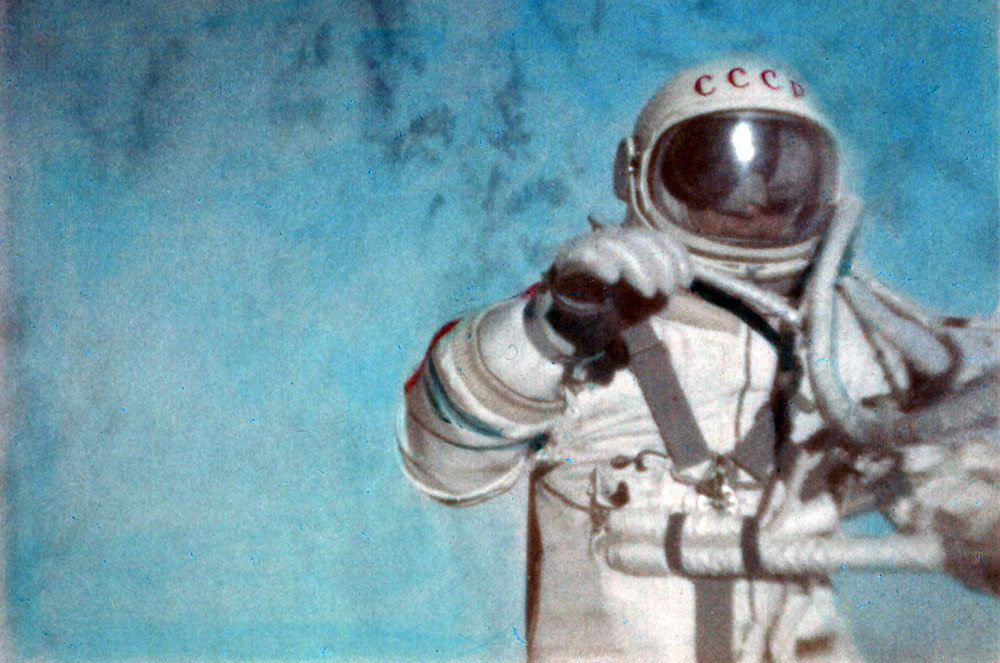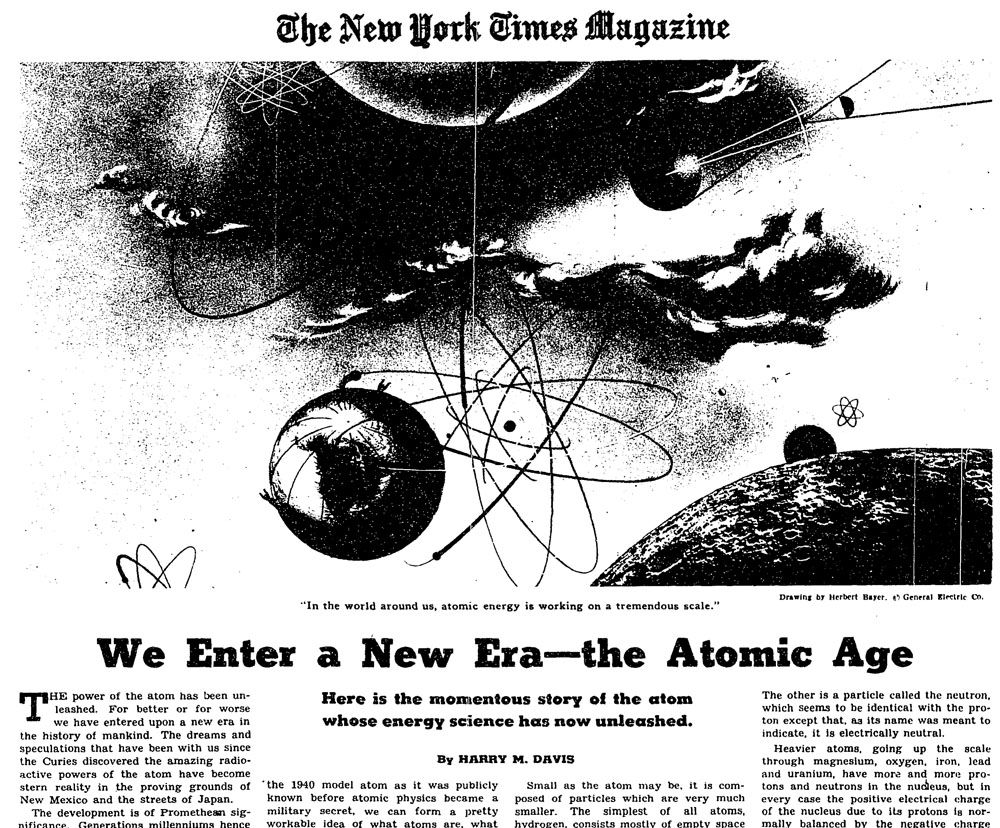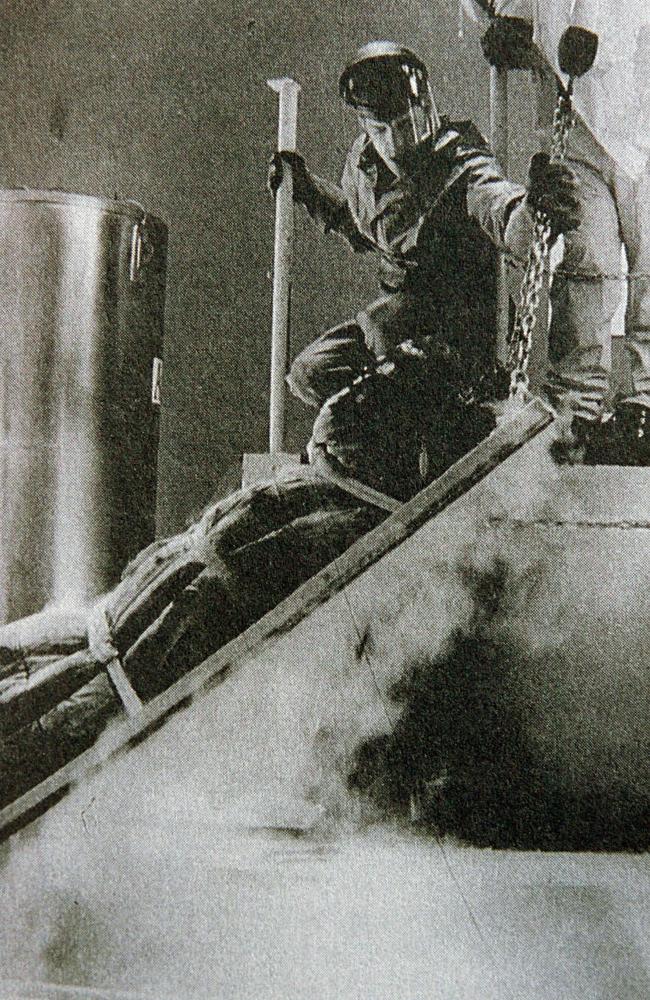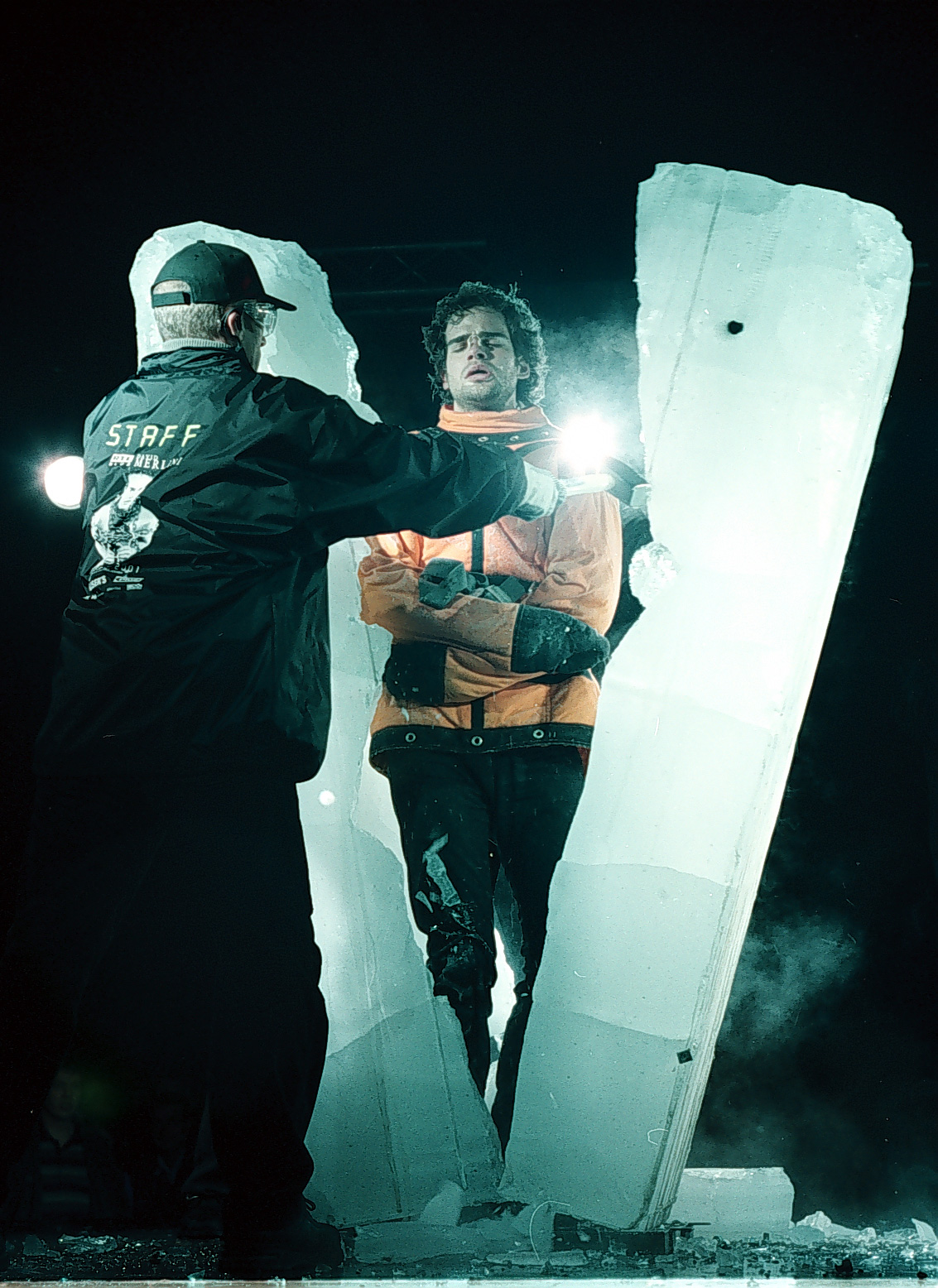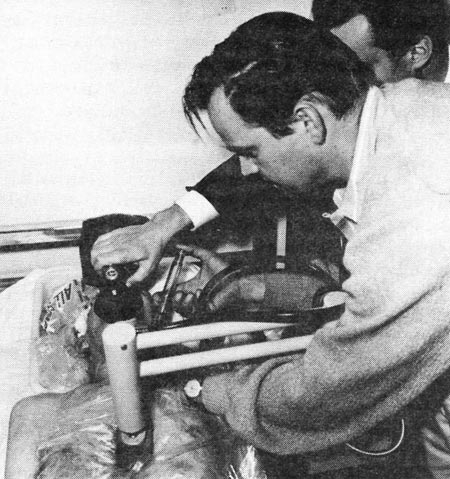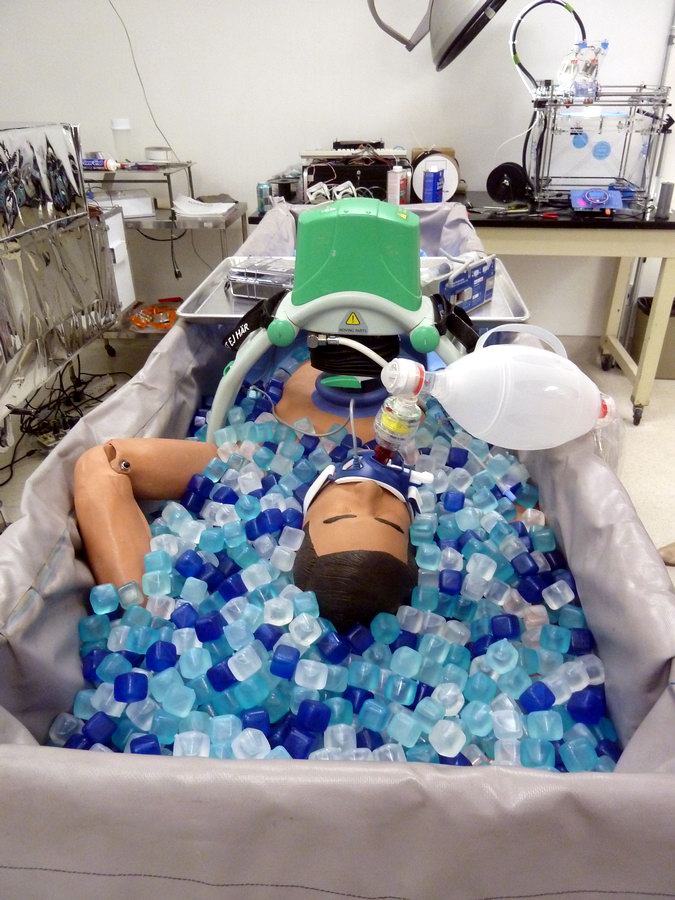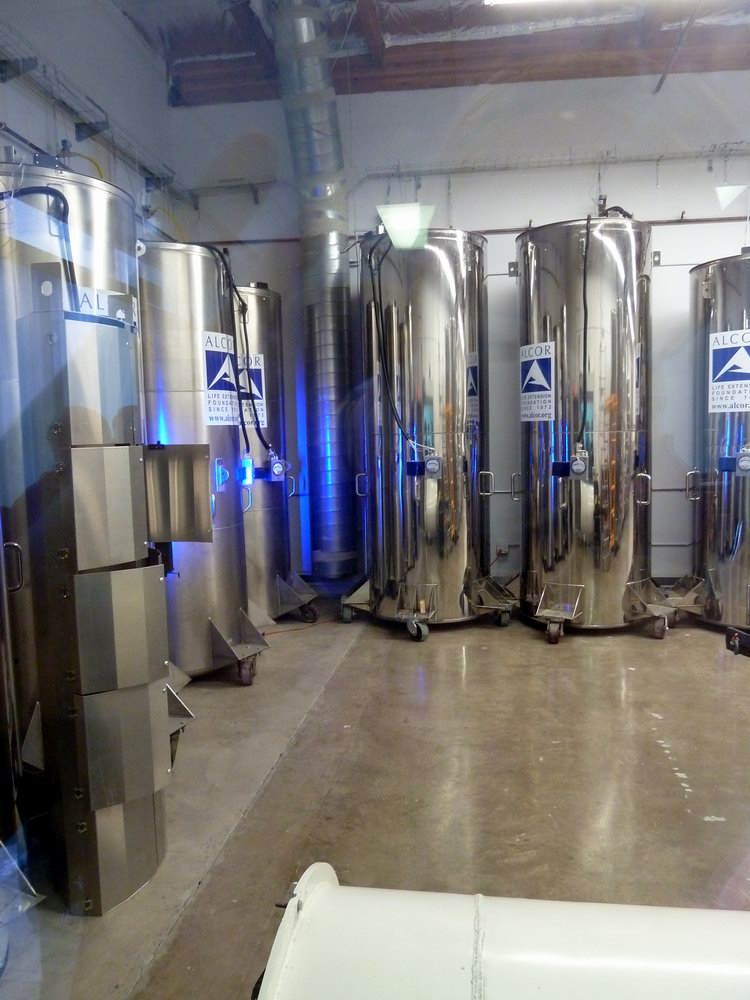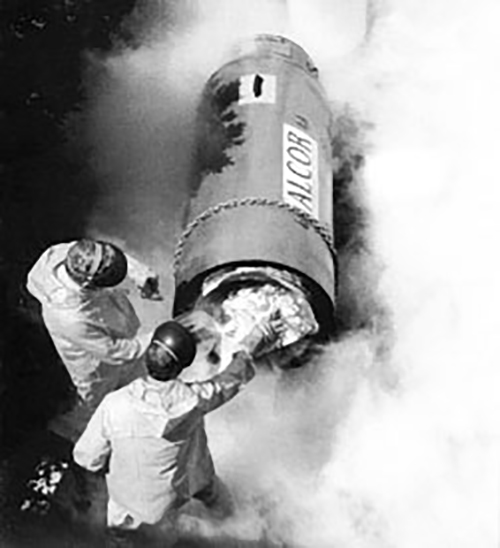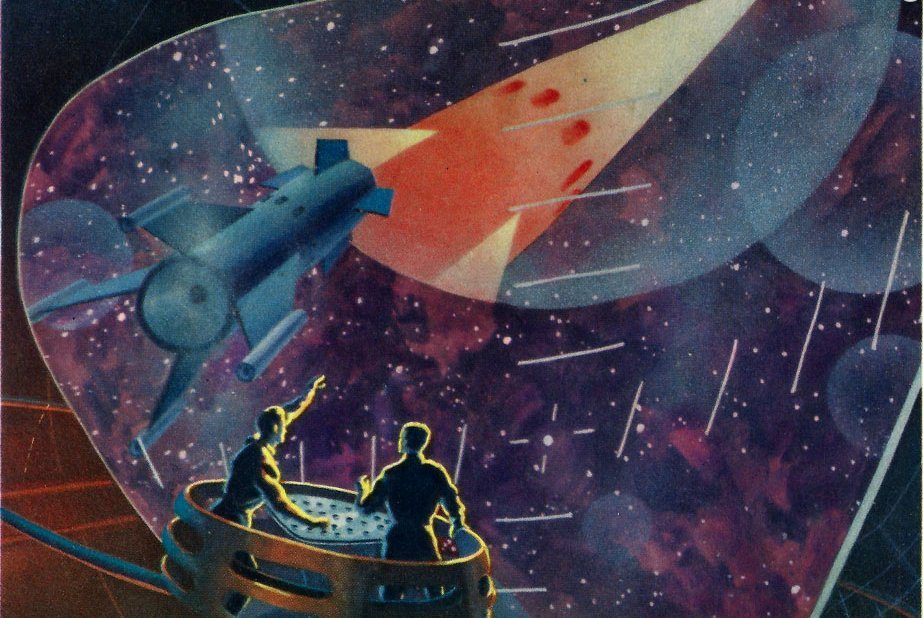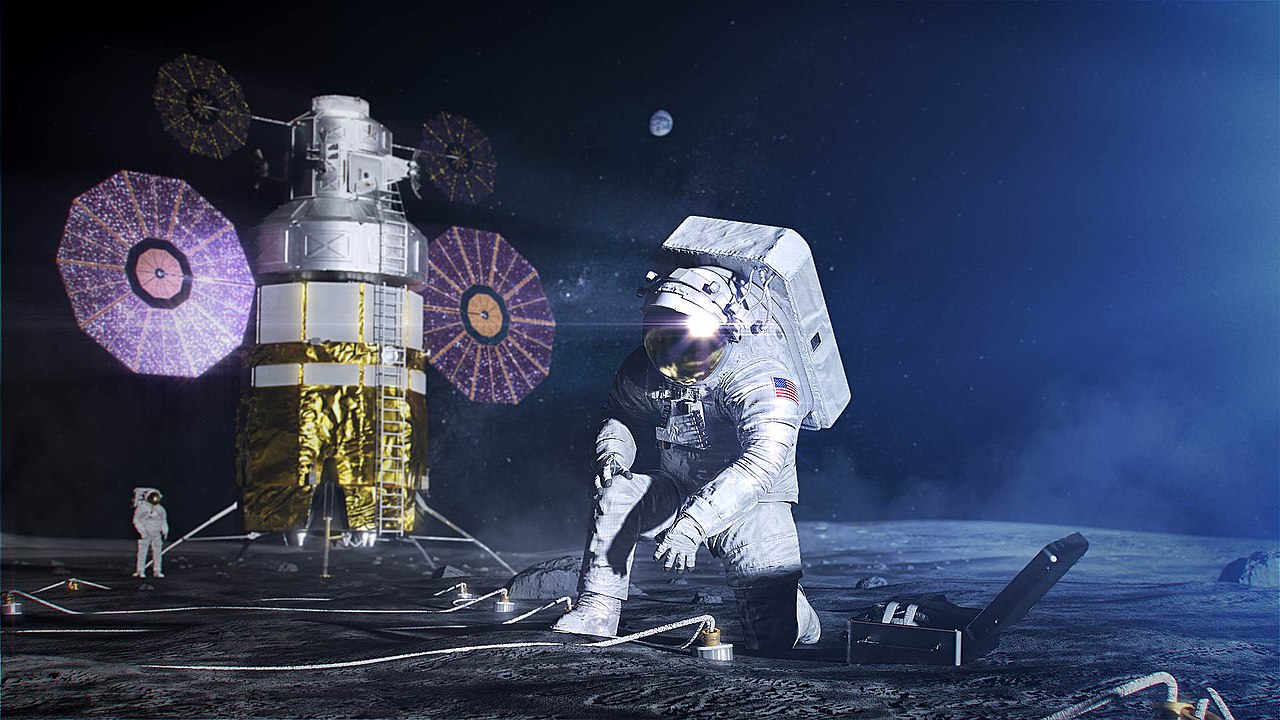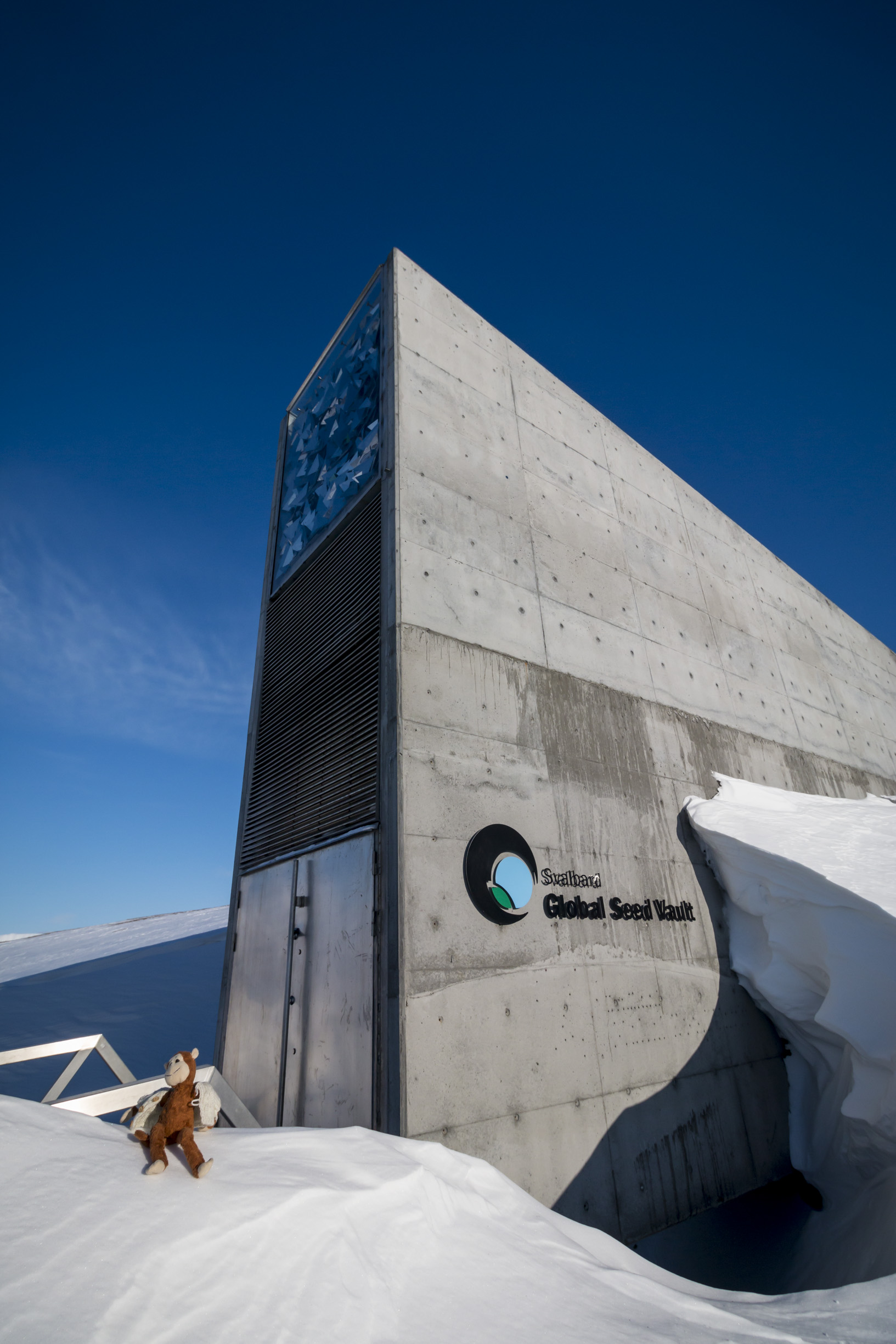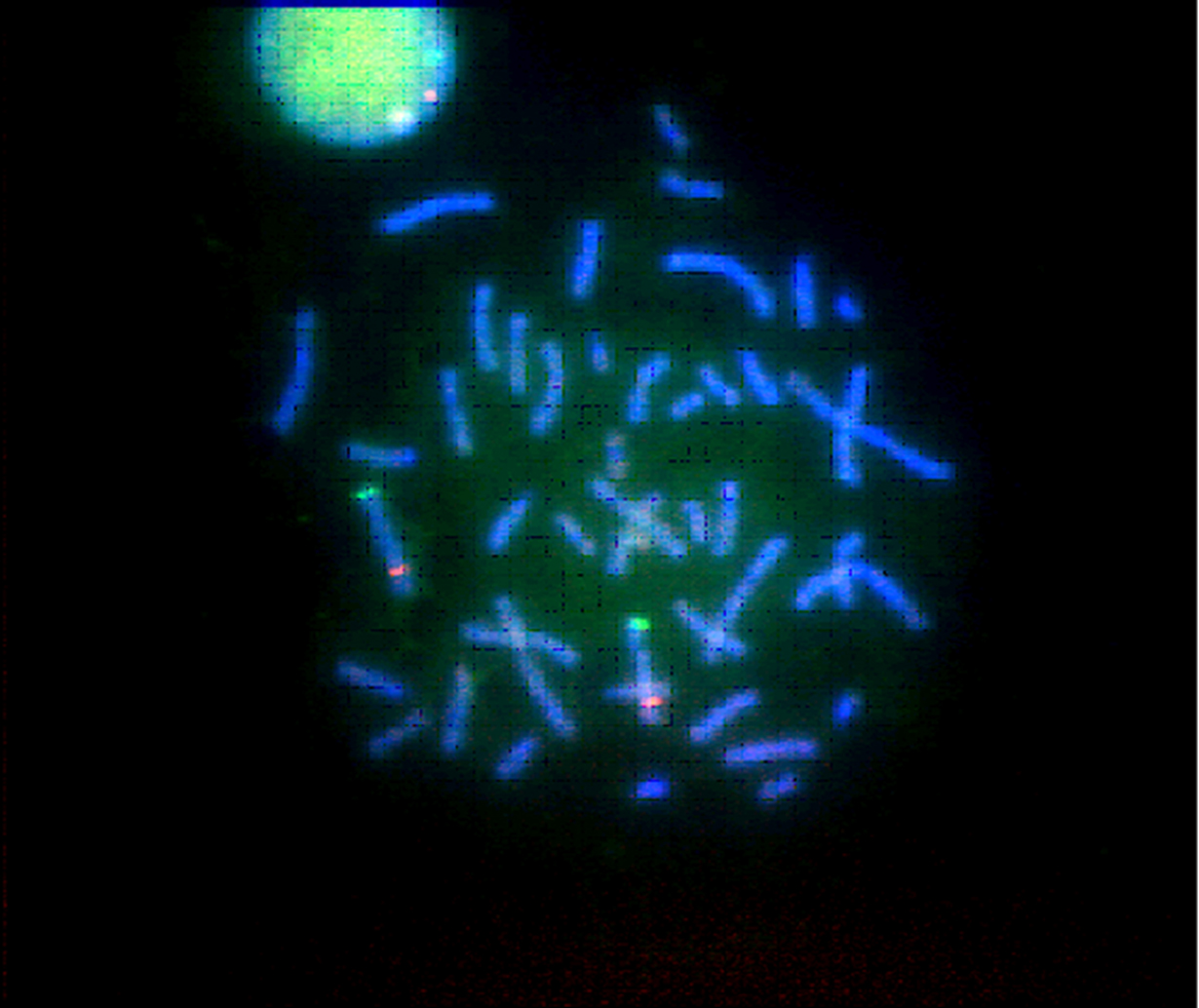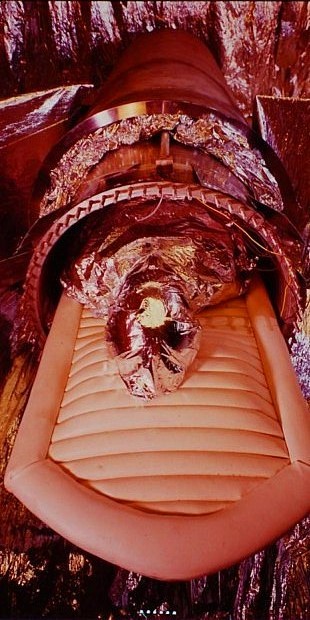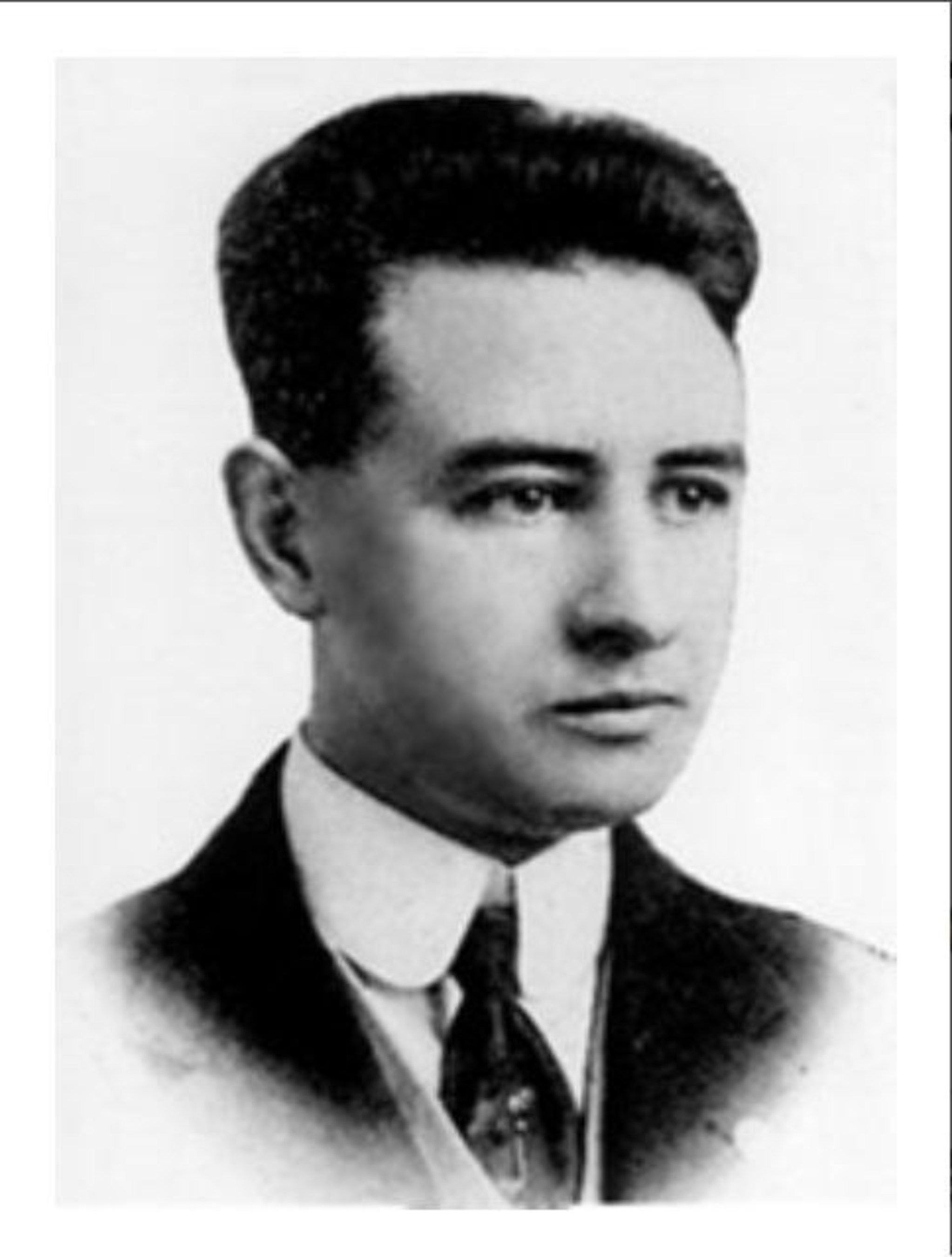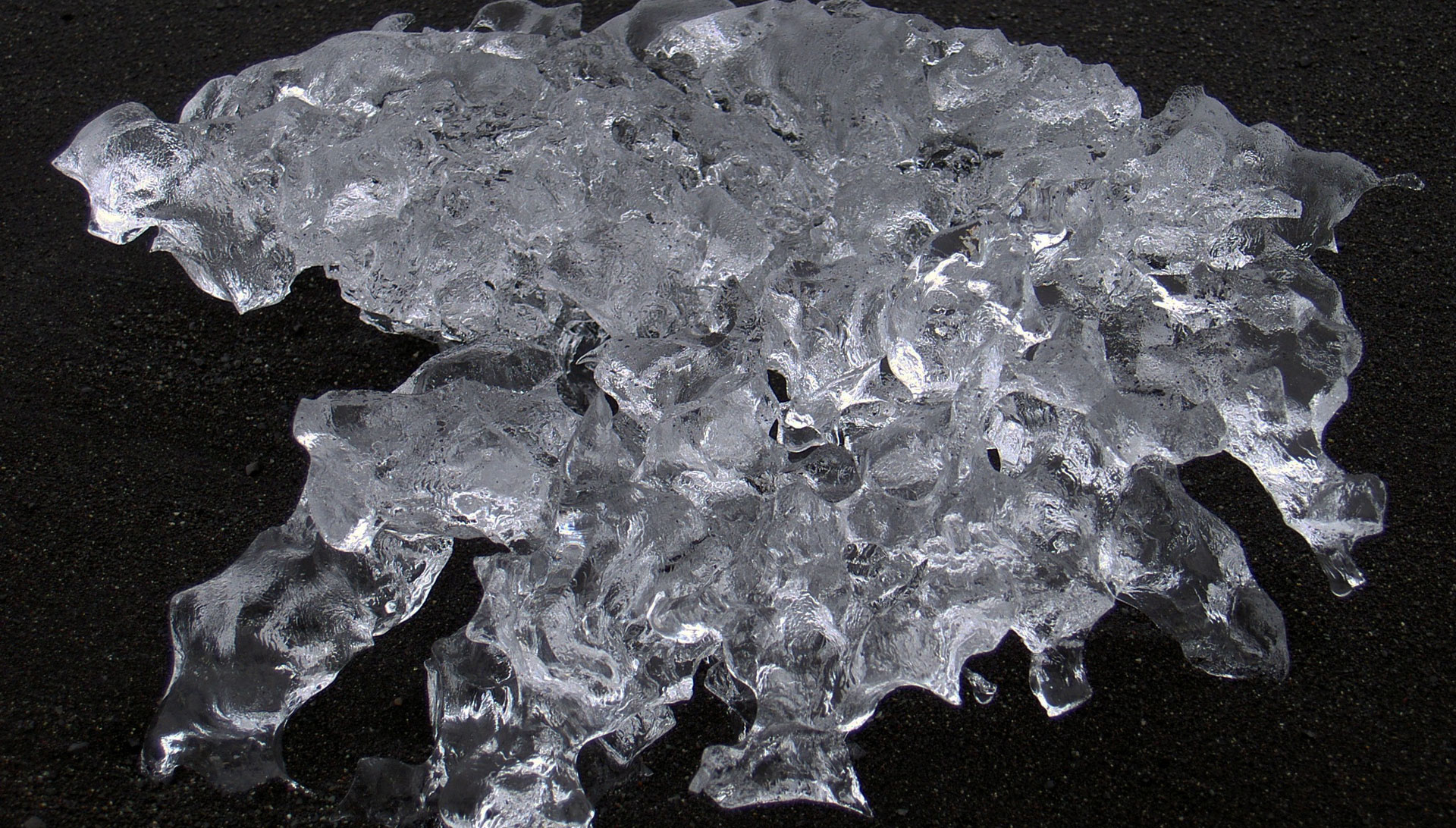
JAMES BEDFORD & THE HOMEOTHERM
June 1965. Alexei Leonov is the first man to walk in space. Lindon B. Johnson has just announced the Great Society: a series of government programs to solve all social ills. The atomic age is in full swing. At the University of California, a psychology professor sits down at his desk to read about these very same things in the morning paper. His name is Dr. James Bedford. He is 72 years old. Despite having been born when horses pulled carriages, James is a man of his times. He has embraced the technological growth spurt of his generation, always with an eye to the next innovation. As he flips through the paper he comes across a very peculiar ad:
"The Life Extension Society now has primitive facilities for emergency short term freezing and storing our friend the large homeotherm. L.E.S. offers to freeze free of charge the first person desirous and in need of cryogenic suspension.”
The homeotherm, the frozen man, like a caveman preserved in a block of ice. James is familiar with the science of cryogenics; the study of materials and organisms at very low temperatures. But cryogenic suspension? Could you actually freeze a living thing only to thaw it out later? Could a life be, as the ad put it, “suspended” in time? Were they really at a point where you could freeze a man and thaw him out a thousand years from now? Like us, James lives in a time when the promises of science fiction seem within our grasp. For an aging James, with no shortage of scientific curiosity, the ad is a siren of technological hope. So he calls up The Life Extension Society.
CRYONICS
What The Life Extension Society was offering wasn’t exactly cryogenics. Instead, it was offering cryonics; the practice of freezing a body for future revival. Professor Michael Hendricks has this to say about it in his paper for the MIT Technology Review:
"Reanimation is an abjectly false hope that is beyond the promise of technology and is certainly impossible with the frozen, dead tissue offered by the “cryonics” industry. Those who profit from this hope deserve our anger and contempt."
While at first glance it may sound like a scam, the pioneers of the field were anything but charlatans. They believed, and their followers continue to believe, that the necessary scientific breakthrough is just over the hill. The same man who put out the original ad once wrote:
"Are we shouting in the abyss? How could 110 million go to their deaths without one at least trying for a life in the future via freezing? Where is the individualism, scientific curiosity, and even eccentricity we hear so much about?"
The father of cryonics was the American academic Robert Ettinger. He first proposed it in his 1962 book “The Prospect of Immortality”. Like James, Ettinger was caught up in the advancements of his time: nuclear power, space exploration, computation. He dreamed of a near future where science and technology would pave the way to an enlightened utopia. In his books he talks about how, in a few decades, the science of preserving human tissue at low temperatures should be achievable. He dreams of waking up in a world where progress has reached its zenith: a world without racism, without gender inequality, without war, a world where the logical and scientific mind has prevailed.
"If civilization endures, if the Golden Age materializes, the future will reveal a wonderful world indeed, a vista to excite the mind and thrill the heart. It will be bigger and better than the present. For us to get there, courageous individuals will have to take matters into their own hands. Then, for the first time in the history of the world, it will be au revoir but not Good-by."
Imagine waking up hundreds or even thousands of years from now. Imagine starting up a life that’s been on pause for centuries, perhaps in a civilization and language that’s entirely foreign to you. Ettinger himself had a lot of questions:
"Can families be kept together? Is there a conflict between the freezer program and religion? Do we have a right to impose ourselves on our descendants, like a mob of poor relations come to dinner? Who needs us? Will it be only the selfish and cowardly who are frozen? How can a mere human endure, let alone enjoy, thousands of years of life? And if we cease being human and become superhuman, will we still be ourselves? How much can a man change without losing his essence? What is death?"
IN LIMBO
James doesn’t take the Life Extension Society up on their offer. However, some ideas have a pernicious way of growing on us. The process can be irrational, working at our subconscious, beyond reason but in hindsight always reasoned. When James was ten years old his dad had told him about the Wright Brothers; the first people to ever fly. Four years from now they would be walking on the moon. James knows that what seems impossible one moment was quaint history the next. He sees himself as a pioneer that would take the rank of the firsts of his generation: the Wright Brothers, Yuri Gagarin, or Neil Armstrong. Only he isn`t being propelled up but forward through time.
Less than two years later, On January 12, 1967, James dies of cancer at the age of 73. It’s as if the moment he decided to live for the future the present would no longer have him. James has seen his hour approach, and has decided to offer himself up as the first homeotherm. All the necessary preparations, including his family’s blessing, have been made. As his heart finally stops beating he’s laid down on a bed of ice. Three men arrive: Robert Prehora, a chemist; Dr. Dante Brunol, a physician; and Robert Nelson, a TV repairman turned cryonics enthusiast. Eight hours pass as they cool down the body taking turns to run out for ice. James’ body is now terribly cold. All the liquid in his body has stopped moving, frozen in time. They lower him into his capsule. The three men stand over the metal cylinder and ask themselves:
Is he alive? Is he dead?
THE PRICE OF FROZEN LIFE
Back in the sixties the cryonics procedure was very basic, but is now quickly becoming a whole economy. The largest provider of cryogenic suspension is Alcor Life Extension Foundation in Scottsdale, Arizona. According to them, the procedure should begin immediately after death. In fact, it would be better if you were still alive but the law says that’s murder. Since no one knows when their hour will come, cryonic subscribers have even moved to Scottsdale to be closer to the facility. They hope to be ready to be frozen solid as soon as they’re pronounced legally dead. Others who live further away pay a fee to have a team of paramedics on call 24 hours a day.
Once your body finds its way to the Alcor facilities, preferably on a bed of ice, the procedure begins. First you’re set up on a heart-lung machine to keep blood moving. Then follows a process called vitrification; a process akin to anti-freeze where more than 60% of the water inside cells is replaced with protective chemicals. Your body is then cooled down to -239 Celsius. Once frozen, you’re placed in a large vacuum-sealed container, or dewar, with three other bodies as if bundled up close for warmth in the unbearable cold. These 2 ½ ton, 9 foot high storage tubes are filled with liquid nitrogen that will keep the four of you cool until hell freezes over.
The price tag for that operation is about $200,000 USD. Most people afford this through a life insurance policy. Believe it or not, there are quite a few insurance agents that Alcor can recommend. You can then join the other 500 bodies and brains currently preserved in the world’s growing number of commercial cryonics facilities: Alcor in Arizona, TransTime in California, the Cryonics Institute in Michigan, Oregon Cryonics, The Yingfen Group in Jinan, China, KrioRus near Moscow, and Southern Cryonics in Australia. A Swiss one should be opening next year for Europeans.
THE MANY VOYAGES OF JAMES
James’ adventures do not end with his freezing. Despite the immovable image a frozen body suggests, his body becomes a hot potato for the fledging cryonics community for the next decade. His first home as a frozen mummy is in Prehoda’s garage, who had helped freeze James. That lasts until Prehoda’s wife finds out about it. Lashed to a pickup truck, James is then carried up through Topanga Canyon, parks and playgrounds, until arriving at Edward Hope's Cryo-Care facility in Phoenix, Arizona. In 1969 he gets taken to Galisco facility in California when Cryo-Care goes bust. Unfortunately, the longevity of these businesses can be a real problem. When the business goes under, bodies often just get dumped. You have to bet on a company that will last well into the next civilization. After Galisco, he’s moved to TransTime near Berkeley. That lasts until 1977 when James’ son has to step up and store James himself.
Years pass and rumours abound of James’ whereabouts. Mike Darwin, the president of the new company Alcor Life Extension, decides to go looking. He finds James’ son who refuses to tell - and still has never told anyone - where James’ body was being kept. Darwin convinces James’ son that at Alcor they can take care of him. After some persuasion, James’ son agrees to hand over his frozen father. Alcor proves to be a good bet, although the company ends up having to move twice. This time, they transport James in a U-Haul rather than a pickup. Today, James can be found in Alcor’s headquarters in Scottsdale. There he waits for a bigger, bolder future.
TECHNO-FUTURIST DREAMS
Before the Russian revolution the Russian BioCosmists dreamed of an immortal human race achieved with the scientific control of every atom. The most fervent of these techno-futurist dreamers was Nikolai Fyederov:
Fyederov believed that humans should abandon their urge to procreate, as the sexual act was a distraction, and concentrate instead on their prime moral duty, which was to resurrect the dead.
Like the father of cryonics, Fyederov believed in the au revoir but not the goodbye. But our present-day thinking is not so different.Today, the search for immortality takes the form of a techno-utopic project nestled in Silicon Valley. Here you’ll find a growing number of anti-aging and bio-tech start-ups busy writing a new grand narrative that inscribes the conquering of death itself as the zenith of human progress. They exist in a continuum along with their sister-narratives of space colonization, artificial intelligence, and technological singularity. Companies like Google’s Calico, a largely secretive venture, are trying to unravel the strands of DNA to find out how to stop us from aging. SENS and LEAF - other big players in life extension - are pouring millions of dollars into the business.
It strikes me that these futuristic ideas are actually quite old-fashioned. It’s a relentless momentum to stay ahead of the curve, and to do what no man has ever done before. It’s this old belief that everything is ours to master, including death. A few geniuses with enough financial capital are all the world needs.
The Svalbard Global seed vault is a giant bank of the world’s seeds buried in the arctic. It has been around since 2008 keeping the earth’s seeds frozen in limbo should we ever need to unfreeze them in humanity’s future. Now, the permafrost the seed vault sits in has started to melt. Four years ago the vault began to flood. Suddenly, the safest place to keep something frozen will soon be a swimming pool. But those are just tiny seeds. How would we keep thousands of bodies frozen when the world is only getting hotter?
WAKING UP
Is there is any real chance of waking James or any of the others in limbo? Cryonics proponents will admit that right now it’s impossible. However, they’re banking on nanotechnology as the future resurrector. In the future, they say, tiny microscopic robots will be fed into the body where they will work away restoring damaged tissues, warming each individual cell to the appropriate temperature and repairing broken DNA like an army of tiny worms at work. Asides from seeds, sperm, and eggs, we have had some slight success putting things back together after a deep freeze. We’ve even successfully frozen and reanimated worms. But the days of entire bodies and minds are a long way off. If you ask the people keeping James frozen, they’ll say:
"James is in a suspended state akin to a deep coma. [He’s] is not currently, legally alive. But neither is he dead."
In 1991, Mike Darwin made an examination of his frozen body.
"I found the upper body and neck, as well as his arms, discolored and red as if inflamed from an infection. His nose was flattened from being compressed by a slab of dry ice during initial freezing, and the skin on his chest had cracked. If Bedford is ever revived he will most certainly look like a ghost."
It doesn’t sound very hopeful for James, but he never held out all that much on coming back anyway:
"I want you to understand that I don’t do this thinking that I’m ever going to be resuscitated. I do it in the hopes that my children or my grandchildren will one day benefit from this wonderful science. I don’t believe in immortality. Everything is going to die sooner or later. Even the planet, even the sun. But I want to be around as long as I can."
AU REVOIR
It’s almost a miracle James is still frozen. No one frozen before 1973 still is, except him. Despite being the first, he is the only one to have made it through the first few years of cryonics. The absurd lengths to which people went to keep him below zero is a marvel. James is our modern day mummy, like those of ancient China or Egypt, safe from falling apart back into dust.
I hope James remains frozen far into the future, or well into the next ice age. Perhaps future civilizations or aliens will dig him up, hold him in their arms, and marvel at this 20th century man. Behold this body that holds all the failed, troubled dreams of our era. Behold this body reaching far beyond its grasp. After examining him in 1991, Mike Darwin wrote James a final letter.
"Dr. Bedford, I hope we really meet someday. I am not sure we will have much in common, save perhaps for the heritage of the culture and era which we both shared. We will both have lost friends and family who chose not to accompany us; that sadness we will also have in common. But far more importantly, we will have the joy, the sheer, unbounded joy of being alive in a universe where we can move freely, unchained from the bonds of gravity, earth, and time. And your dream, the dream of reaching a tomorrow where you can resume living, will have been realized…
Until then, au revoir."
